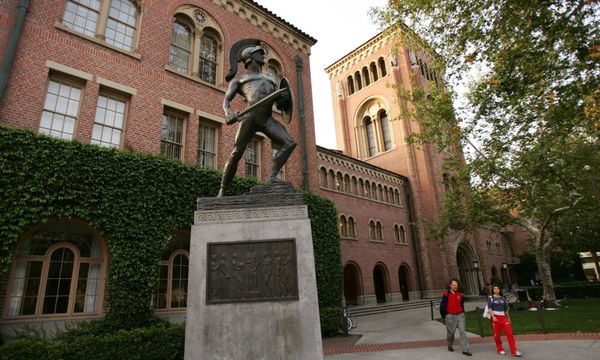
It wasn’t just that Ben Simmons needed a few extra games to get his sea legs back underneath him. He also needed to change his position.
After missing all of last season and then beginning the 2022-23 campaign with a new team, the former No. 1 overall pick struggled dramatically to start his tenure in Brooklyn.
When the Nets acquired Simmons, they thought they were getting the version of him that made First-Team All-Defense in 2021 and 2022. But perhaps they have found a different version of the three-time All-Star.
There were “rumblings” that Simmons would play the five and before the season began, Simmons said that he was “looking forward” to playing center when the matchups called for it. Now, however, it seems like a permanent position change ought to be on the horizon.
Jacque Vaughn says Ben Simmons will start at center tonight, as well. Nic Claxton (personal) is out tonight.
— Tim Bontemps (@TimBontemps) November 20, 2022
Simmons was the starting center vs. the Grizzlies on Nov. 20 and he finished the game with 22 points (11-of-13 FGA), 8 rebounds, and 5 assists. He was a team-high +19 and it was his best performance of the season.
Although long described as a point guard, the concept of Simmons at the five is nothing new or revolutionary. A few years ago, the late Jonathan Tjarks explained why Simmons makes so much sense as a center (via The Ringer):
“There is a Plan C, one that would move Simmons off the ball and still allow him to contribute on offense: using him as a screener in the pick-and-roll. That role would unlock the best aspects of his game and keep defenses from sagging off him. Simmons would have a counter for everything—he could post up smaller defenders if they switched the screen, roll to the rim and catch lobs against a drop coverage, and make plays in four-on-three situations if they blitzed the screen. He could be a bigger and more athletic version of Draymond Green with more scoring ability. A player can be only as good as the role that he is used in. Draymond wouldn’t be anywhere near as valuable on a team that played only conventional lineups. Spending time at the 5 is even more important for Simmons because he can’t shoot. He wouldn’t have to become a role player. He could do everything that Draymond does while also averaging 20 to 25 points a game.”
Years later, no longer playing with generationally-talented center Joel Embiid, we’re finally beginning to see that evolution for Simmons on the Nets.
Simmons is currently defending centers on a career-high 16.6 percent of his total possessions, per NBA.com. For comparison, Simmons only defended opposing big men for 6.5 percent of possessions in 2019-20 and 7.6 percent of possessions in 2020-21.
Based on what we have seen from Simmons when playing center in the past, the success could continue as he gets more comfortable.
On the offensive side of the floor throughout the course of his NBA career, including his minutes in the postseason, Simmons has averaged 22.9 points and 10.9 assists per 100 possessions when playing either as the guard or the forward.
But in the 8.4 percent of possessions that he has played at the center, those numbers have spiked to a whopping 43.0 points and 13.6 assists per 100. He played center during the first round of the playoffs in 2019, and he looked so good:
Even if those numbers are a result of a small sample size where he could eventually regress to the mean, there is still some reason for optimism.
Brooklyn’s lineups with Kyrie Irving, Joe Harris, Royce O’Neale, Kevin Durant, and Simmons (the de facto big man) have scored 127.0 points per 100 possessions. That ranks as one of the most potent offenses in the Eastern Conference.
But the exact same lineup with Nic Claxton or Day’Ron Sharpe instead of Joe Harris has struggled to score, and it doesn’t exactly take an advanced NBA scout to figure out why: Spacing.
The Nets are shooting 31.8 percent from beyond the arc when Simmons shares the floor with traditional big men like Claxton or Day’Ron Sharpe. Brooklyn has been outscored by 17.6 points per 100 possessions in those minutes.
Ben Simmons at the five can work for periods when the following happens:
– The team gang rebounds
– The spacing is there
– Ben himself is in formAll of those were the case last night against Memphis.
— Jac Manuell (@JacManuell) November 21, 2022
But when Simmons has played and both Claxton and Sharpe rest, the Nets are outscoring other teams by 6.6 points per 100 and they are shooting 42.1 percent on 3-pointers.
For all of his shortcomings as a shooter, only two players (Chris Paul and Luka Doncic) have assisted on more 3-pointers per 100 possessions since Simmons made his NBA debut in 2017. He is able to create 3-point chances for his teammates at an extremely high rate.
But if he is not able to knock down 3-pointers on his own, the Nets need to flank him with a lineup that can. They can play him with a stretch big if they make a move before the trade deadline, but non-shooters like Claxton and/or Sharpe make the floor too crowded — especially in the dunker spot.
Claxton still provides value as a high-motor big man in the second unit, but for the Nets to have any success as their roster is currently constructed, they will need Simmons to move to the center on a full-time basis.
Just realized that if Nic Claxton misses Tuesday’s game, Ben Simmons will likely start at center against Joel Embiid pic.twitter.com/oKPEiy1FOt
— Adam Aaronson (@SixersAdam) November 21, 2022
If and when they commit to Simmons at the five, the fun can really start.
Brooklyn’s next game is against the 76ers, which is where Simmons played for the entirety of his career before this season began. If they’re serious about playing Simmons as the big man, that means he will match up against Joel Embiid in Philadelphia.
After the awkward way in which their time together ended, as well as the uncomfortable relationship with Philadelphia coach Doc Rivers, that has the possibility to be must-watch television for sports fans everywhere.







